Russia’s Forces in the High North: Weakened by the War, Yet Still A Multidomain Threat
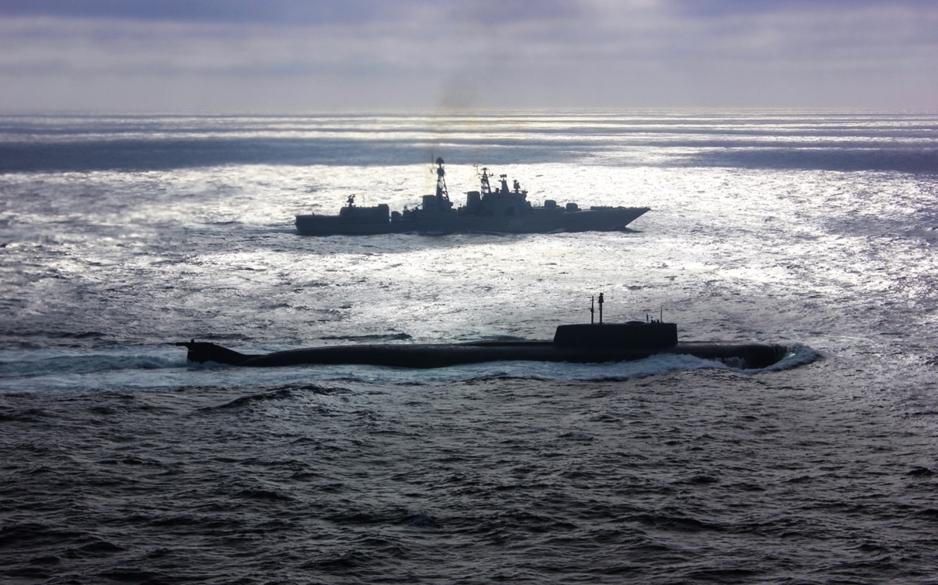
Russian land forces in the High North are severely weakened by the war in Ukraine, while the sea and air forces have largely maintained normal activity levels, says researcher Katarzyna Zysk. The Northern Fleet is also being supplied with new vessels and weapons.
“In 2023, the Russian Northern Fleet has largely maintained its normal activity level from what one can assess from open sources,” writes Professor Katarzyna Zysk at the Norwegian Institute for Defence Studies to High North News.
During the past year, Zysk has noticed two things in particular about Russia’s military capacity and activity both in and from the North.
“The war in Ukraine has had a remarkably serious effect on the Russian troops in the High North. Around 80 percent of the Russian land forces have been sent to the front in Ukraine and suffered extensive losses. This also applies to materiel. It will take a few years to re-build that troop,” she points out and continues:
“At the same time, the High North continues to play a noteworthy role in Russian air attacks against Ukraine. This has to do with the Russian strategy to spread strategic bombers to increase their survivability. It was utilized after Ukrainian drone attacks on such aircraft, like at the Engels airbase south in Russia.”
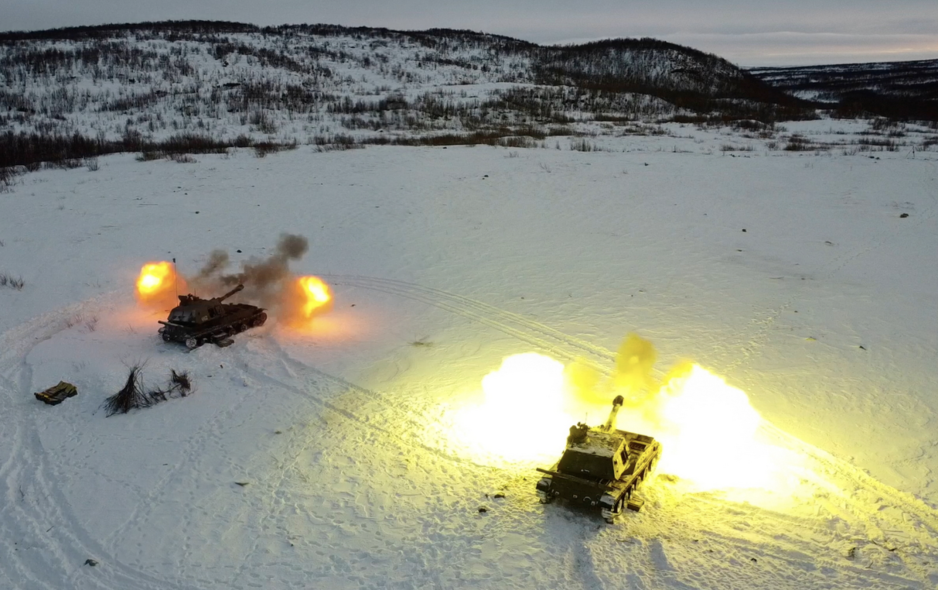
The Northern Fleet’s combat forces
– Naval forces: 26 submarines (8 strategic and 19 tactical), 10 large surface ships (aircraft carrier, cruiser, destroyers, and frigates), 8 landing ships, 16 corvettes and patrol vessels, as well as 8 minesweepers. (IISS, The Military Balance 2023)
– Air forces: Su-33, Su-25, MiG-29 and MiG-31 fighter aircraft. Su-24 type bomber. Maritime patrol and anti-submarine aircraft of the Il-38 and Tu-142 types. Ka-27/Ka-29 anti-submarine helicopters. (IISS, The Military Balance 2023)
– Land Forces: The 61st Naval Infantry Brigade in Sputnik, the 200th Separate Motor Rifle Brigade in the Pechenga Valley and the 80th Motorised Rifle Brigade in Alakurtti. As mentioned, around 80 % of the brigade’s personnel and equipment are tied up in the Ukraine war with heavy losses.
Multidomain threat
With more or less intact sea and air forces, the Northern Fleet has appeared capable of conducting its core tasks, Zysk considers. She particularly refers to the protection of the strategic submarines, which are central to the country’s nuclear deterrence and second-strike capability.
“Russia’s long-range precision weapons placed in the High North also continue to constitute a threat against targets in Europe and strategic communication lines in the North Atlantic, the professor maintains.
In the North, Russia also has central resources for asymmetric warfare vis-á-vis NATO, the conventionally and militarily technologically superior party. Examples include tools for underwater reconnaissance, electronic warfare, and anti-satellite weapons.
“Such measures can be used to attack critical infrastructure like military installations, communication systems, and various targets of major economic, political, and symbolic significance. This is done to undermine the opponent’s basic societal functions and will to fight, as we have observed in Ukraine. Important in that context are offensive capacities developed by not least the Main Directorate of Deep-Sea Research (GUGI), which belongs to the Russian navy and mainly operates from the High North,” explains the professor.
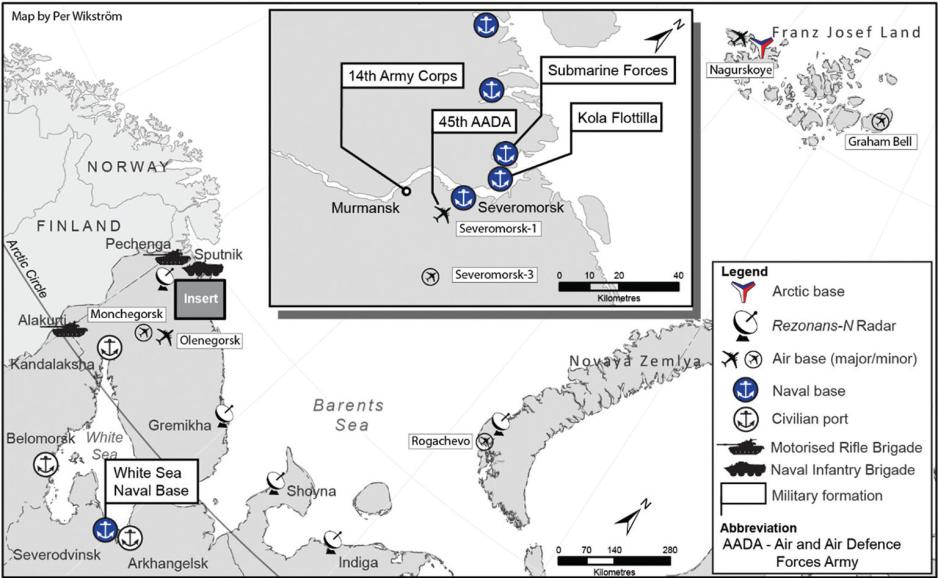
Innovation
“Russia is also developing several new weapon projects, such as around the Poseidon underwater drone – which is nuclear-powered and can be equipped with nuclear warheads. This type of drone will be carried by Belgorod submarines of the reconstructed Oscar-II class, deployed at the Northern Fleet,” Zysk points out and continues:
“The Russian defense has precisely continued integrating new technologies, such as unmanned underwater vehicles, into the nuclear tasks. The Poseidon drone is likely developed to destroy high-value targets such as major transport groups at sea, cities, ports, or other infrastructure by producing radioactive tidal waves.”
“Russia also has, despite major challenges in the Ukraine battlefield and significant economic troubles at home, continued working on developing the nuclear-driven cruise missile Burevestnik, which also will carry nuclear warheads. This highlights the High North’s traditional role as an important area to test new weapons.”
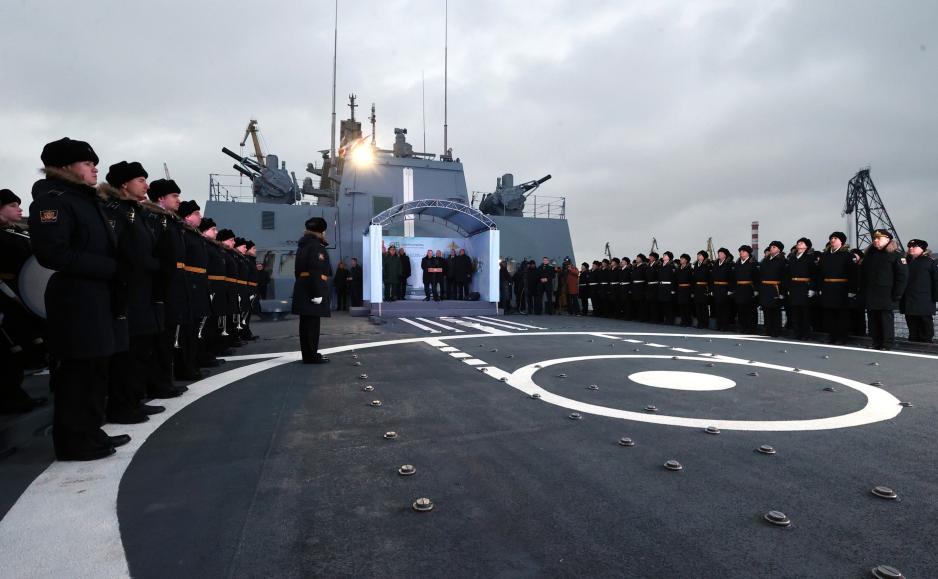
New additions
Soon, the new Admiral Golovko frigate will join the Northern Fleet, said Russia’s President Vladimir Putin at the end of December.
In 2024, the advanced nuclear-driven submarine Arkhangelsk with cruise missiles (SSGN) of the Jasen-M class will also be ready for the Northern Fleet, according to the Russian MoD.
“We will undoubtedly deliver on all our plans for building submarines and surface ships. We will strengthen the Russian navy’s combat preparedness quantitatively and improve our marine power in the Arctic, the Far East, the Black Sea, the Baltic Sea, and the Caspian Sea, which are important strategic regions,” said Putin when he visited the Sevmash shipyard in Severodvinsk in Arkhangelsk county earlier in December.
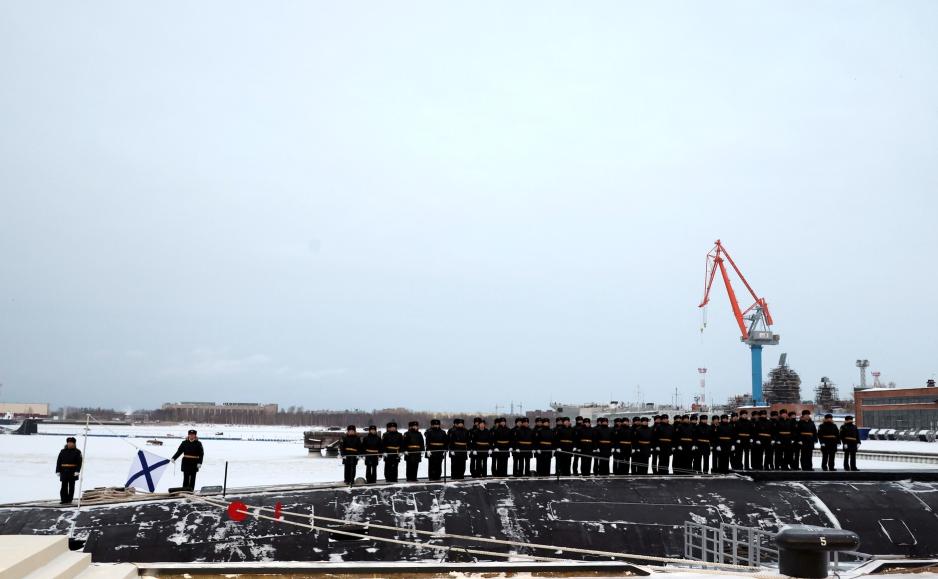
Russian response to Nordic response
March will see the outset of Nordic Response – an exercise gathering over 20,000 soldiers from 14 NATO allies and partner countries for activities mainly in the northern parts of Norway, Finland, and Sweden.
What are your expectations for Russian activity during Nordic Response?
“Largely as before: Russia will try to observe it as well as it can and the authorities could exploit the exercise to intensify anti-Western propaganda – not least toward its home audience. Some critical public statements might come, but nothing beyond the usual comments from the Russian side during such events. However, this is provided that nothing special happens to further worsen Russia’s relationship with the West or domestic political stability in Russia,” replies Zysk.
The allied training activity will stretch northeast to the middle of Finnmark county, Northern Norway, which borders Russia. Do you think that will affect the Russian response to the exercise?
“I do not see any reason for that, although it can be (mis)used by Russian authorities for propaganda purposes to strengthen the anti-West narrative. Russia itself has systematically expanded and increased its number of exercises and training in the region since 2007,” she points out.
Risk of unintended escalation
In light of the increased military activity in the High North, there is a certain risk of unintended escalation through misinterpretations and accidents – not least connected to insufficient staffing. Yet, this risk does not appear significantly higher than last year, Zysk assesses.
“Norway and Russia maintain a hotline between the Norwegian Joint Headquarters and the Northern Fleet to prevent misunderstanding and unintended escalation. Elements of uncertainty lie with the Northern Fleet’s staffing situation and maintenance capacity, which can contribute to accidents on the Russian side. This is something we are following.”
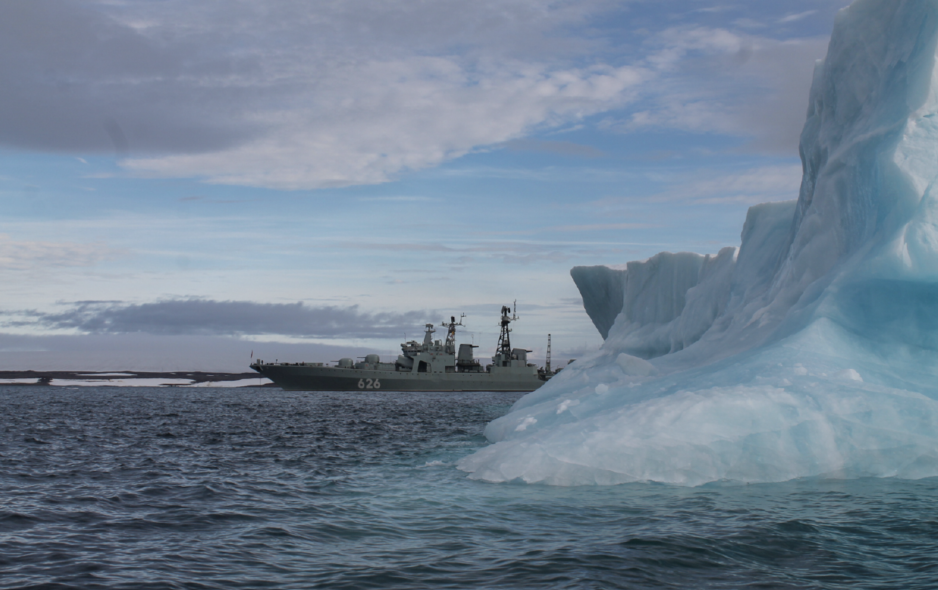
Should be followed closely
The professor maintains that several aspects of Russian military activity in the North should be kept an eye on in the new year.
“Some of the most important aspects that should be observed are these: To what extent is Russia able to maintain “normal” activity and follow the annual cycle of military activities – both regarding nuclear and conventional forces?” she writes and continues:
“Can one see changes in Russian exercise patterns? If so, what changes and for what reasons? Is it, for example, linked to insufficient staffing, technical limitations, and funding – or could there be changes in the Russian approach to operations and strategy?”
According to Zysk, it is also essential to keep monitor the following:
“Is Russia investing in rebuilding the lost land forces in the High North? Will Russia be able to continue with military modernization and the testing of new weapons? Will the major defense budget for 2024 and forward impact the High North? If so, in what areas? And how will Russia adapt its defense to the NATO expansion in the North?”
The Northern Fleet’s status and facilities
– The Northern Fleet is one of the Russian Navy’s fleets and Russia’s most important military force (sea, air, and land forces) in the Arctic.
– In 2014, a joint operational strategic command for Arctic operations was established at the Northern Fleet’s headquarters in Severomorsk, Murmansk county.
– In 2021, the Northern Fleet also gained status as one of Russia’s most central military-administrative units (on par with a military district). The unit includes the Republic of Komi, the counties of Arkhangelsk and Murmansk, and the Nenets Autonomous Area.
– The Northern Fleet’s status may change due to the ongoing re-establishment of the Leningrad and Moscow military districts. The reorganization is being done in light of Finland’s NATO membership and Sweden’s upcoming admission to the alliance, Russia’s defense minister said in December.
– The Northern Fleet has a large area of responsibility, which includes the North Atlantic, the Barents Sea, and the border areas with Norway and Finland, as well as Russian Arctic sea areas as far east as the East Siberian Sea. The fleet’s ships are also periodically sent on operations elsewhere in the world.
– Most of the Northern Fleet’s bases and garrisons are located on the Kola Peninsula, located near the borders with Norway and Finland. Russia has also upgraded and expanded its military infrastructure in the Arctic over the past 10-12 years, such as on the archipelagos of Novaya Semlya, Franz Josef Land, and the New Siberian Islands.
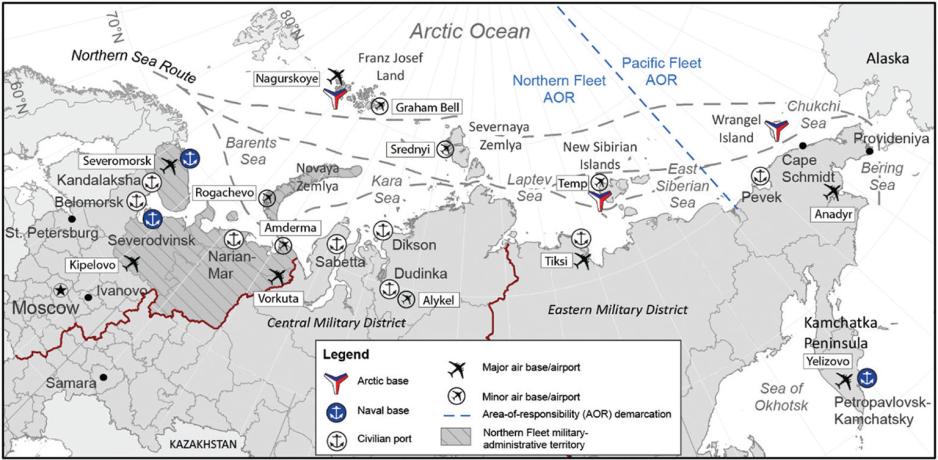
High North News is an independent newspaper published by the High North Center at Nord University in Bodø, Norway.
